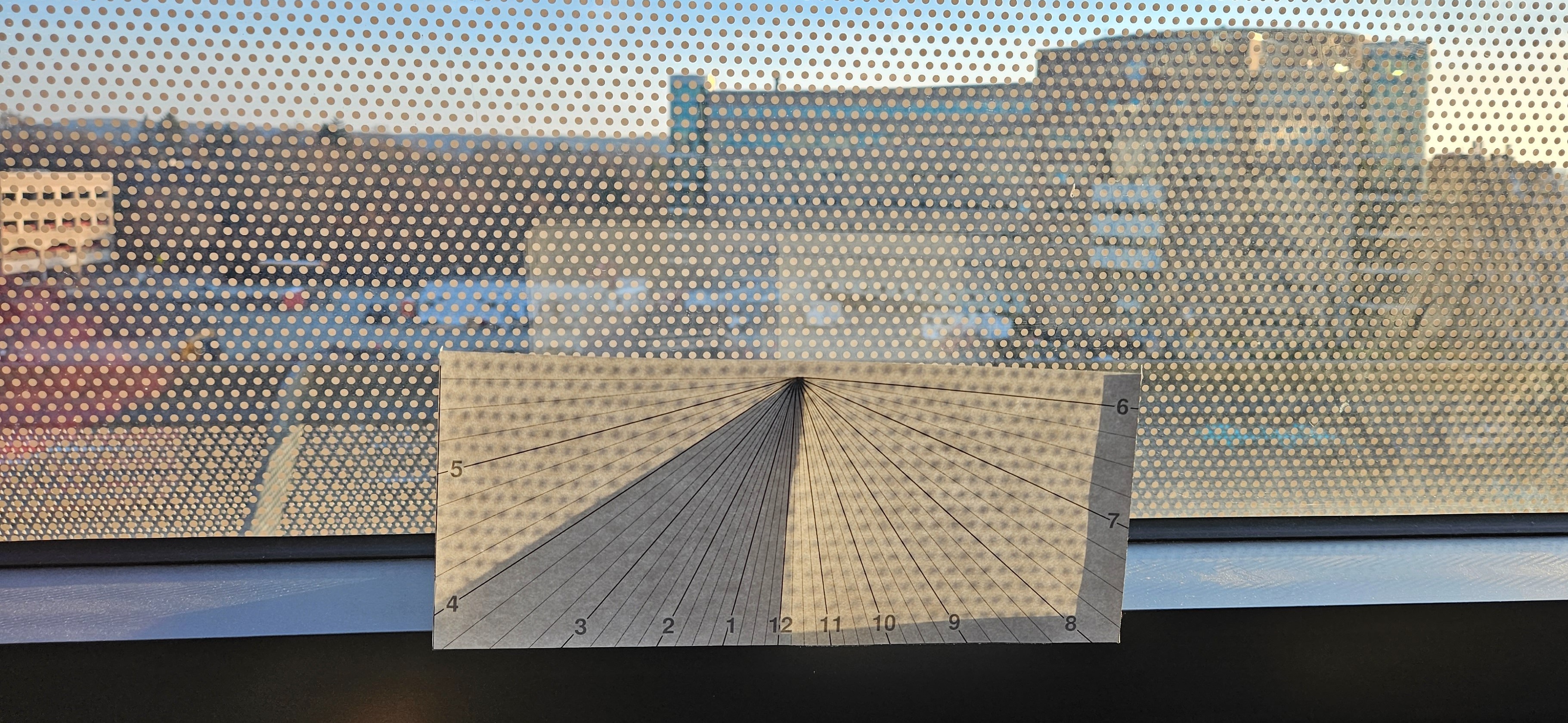Paper Sundial
 4:04pm at Cornell University
4:04pm at Cornell UniversityInstructions: Set your latitude and longitude appropriately for your location. The timezone is guessed based on your longitude, but an offset is necessary for many locations and for Daylight Saving Time.
After printing, cut or score along lines other than the clock face. Fold over upper strip of sundial blade (gnomon) and tape to blade for stiffness. Fold blade up behind clock face, attach to back of face with clear tape. Fold side strips to right angles and attach to each other with clear tape. Place facing exactly south (if south of equator, north).
The NOAA solar calculator is helpful for finding the position of your city and calibrating the sundial. Solar noon should be at the bottom of the sundial.
The day of the year is used to correct for the elliptical orbit of the earth, which causes the sun to get "ahead" or "behind" by up to about 15 minutes during the year. The sundial will appear slowest around Feb 12 and fastest around Nov 3. Apart from setting this parameter, the sundial can also be turned a few degrees away from south to compensate.
Warning: does not work at night, when cloudy, or during solar eclipses.
Feedback to Andrew Myers